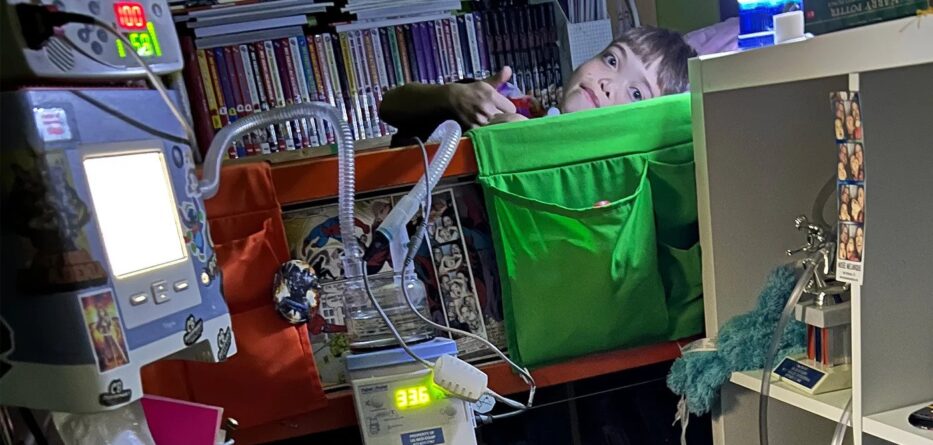Our house lost power a few nights ago, during one of 2023’s record-setting storms. For most people, losing power is a minor inconvenience. For our family, losing power is a medical emergency.
People who use medical devices that depend on electricity need continuous access to electricity. Some of my son’s most critical machines—such as his ventilator—have built-in battery backup. But other machines, like the oxygen concentrator that supplies oxygen to help with breathing and the humidifier that adds moisture to the air from the ventilator, need to be plugged in. Previously when the power went out, I had to scramble to jerry-rig his ventilator circuit to run without many of the accessory machines he usually uses. This required making quick, complicated changes in the dark—putting his health at risk. I then had to quickly figure out a way to get to a place with electricity.
But on this occasion, for the first time, I had access to a portable power station. That meant I was able to simply unplug the machines from the wall and plug them into backup power without the outage affecting my son.
Portable power stations are rechargeable batteries that can provide hours of backup electricity, which is especially important for people who use medical devices or assistive technology. The battery takes up about the same amount of space as a suitcase, and using it is as simple as turning it on and plugging equipment into it. But even though this lifesaving technology exists, most people who need it don’t have access to it because of cost.
The power bank that we used to keep my son’s equipment running overnight was funded by my utility provider, Pacific Gas & Electric’s (PG&E) Disability Disaster Access and Resources Program. This program pays for portable backup batteries, food replacement, transportation, and hotel stays related to power outages. The program works well—but only a limited number of California residents qualify. It’s only open to disabled PG&E customers who live in high-fire-threat areas subject to Public Safety Power Shutoff, a particular type of planned power outage intended to reduce the risk of wildfires. PG&E’s program isn’t available in the cities where most customers live. Other utilities with these programs have similarly narrow restrictions. Those who live in other states, such as the 1-year-old in New York whose mother had to use a bag valve mask to manually give breaths to her child when the ventilator battery ran out, are also in need of backup power.
For people who depend on electricity-powered medical devices to live, any power outage is an emergency. When I’m scrambling to change the arrangement of my son’s ventilator circuit in the dark, I don’t care whether the power is out because of a wildfire threat or because a car knocked over a power pole. From a practical standpoint, it doesn’t make sense for one type of outage to be eligible for utility-funded backup power and the other not to be.
Access to electrical power during outages is an equity issue for low-income California residents. The power bank that we used to keep my son’s equipment running retails for almost $6,000—as much as a decent used car. In California, 26% of people with disabilities live below the poverty level. Families don’t have thousands of dollars to spend on a device that will be used, at most, a few times a year. The sad irony is that because portable power stations are so costly for many families, those who can’t afford them may end up calling 911 during outages and requesting ambulance transportation to a hospital, an even larger expense.
Gasoline-powered generators are cheaper, but not a good option for many disabled people in an emergency. These generators require a well-ventilated outdoor space for safe operation. People who live in apartments typically don’t have access to a place to safely operate gas generators, or a way to store them when not in use. Setting up and operating an outdoor gas-powered generator also requires substantially more strength and agility than using an indoor power station. Using an indoor portable power bank is as easy as bending over to plug equipment into the device.
Access to electrical power during outages is critically important as climate change brings wildfires, hotter summers, and more unpredictable storms. When the power grid fails, it’s an inconvenience for most people, but a matter of life and death for disabled California residents who depend on medical devices that need to be plugged in. The limited program that utility companies have in place proves they can identify customers who have a medical need for backup power and build a distribution network to get them the devices. California’s public utilities should build on this program and expand it across the state to any consumer who needs continuous power for medical devices.
Jennifer McLelland wrote this article for Yes! Magazine. Broadcast version by Suzanne Potter for California News Service reporting for the Solutions Journalism Network-Public News Service Collaboration






